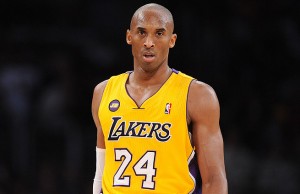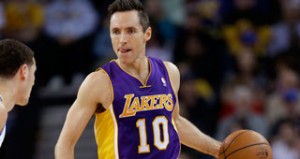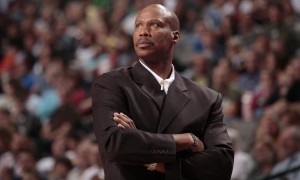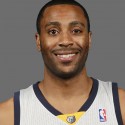 Over the last 35 years, the Los Angeles Lakers have been the gold standard for success, not just in the NBA,
Over the last 35 years, the Los Angeles Lakers have been the gold standard for success, not just in the NBA, 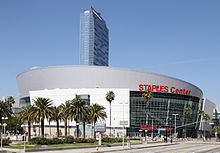 but across the Big Four sports in America. That’s the big picture.
but across the Big Four sports in America. That’s the big picture.
Little picture? The Lakers last season set a new standard for futility: 55 losses, more than any other team in franchise history. Nearly from start to finish, the 2013-14 campaign was a disaster of injuries and ire, much of it directed at owner and basketball operations head Jim Buss, and the rest towards coach Mike D’Antoni.
This summer, the Lakers blew out D’Antoni, who technically resigned, but not really. They did the big swing Lakers thing, going after Carmelo Anthony and/or LeBron James, but came up short. And after that?
Here’s where things get tricky. The Lakers are trying to do what has proven almost impossible in the modern NBA: stay competitive on the floor while trying to rebuild. Once Anthony went back to New York, the Lakers quickly assembled the rest of the roster, with “financial flexibility” as the main goal. That meant passing on the other prime names on the market (Eric Bledsoe, Greg Monroe, Lance Stephenson, Isaiah Thomas) in favor of short-term plays keeping the cap sheet as clean as possible while aiming for a coherent rotation.
As a result, this season’s team looks a lot like last season’s. The Lakers added Jeremy Lin from Houston, picked up Julius Randle with the seventh pick in the draft, and “won” Carlos Boozer, with Pau Gasol (Chicago), Jodie Meeks (Detroit) and Jordan Farmar (LA Clippers) moving on.
Kobe Bryant is back, but will he ever see the playoffs again? Here are five things to watch influencing the answer, at least for this season:
1. How many games can Kobe Bryant play? Nothing matters more for their fortunes this season, nor is there a close second. At 36, with about 20 seasons worth of regular and postseason minutes on his odometer (even after playing only six games last season), Bryant is attempting a comeback from a comeback, a few seasons after most guards – particularly high volume scoring guards – pass their expiration date. If it works, the Lakers at least have a shot to surprise.
If not? Shudder.
During Bryant’s last full season, he averaged 27.3 points, 5.6 rebounds and 6.0 assists over 78 games. I doubt he will average that (in part because he won’t play the 38.6 minutes a night required to get there). But while Bryant’s game will continue evolving away from Super Athletic towards Old Man, if he plays, he will play well, and he will score. (When he’s 83 years old, hobbling onto the court at the Y, he’ll score.) The question is how well his body will hold up over 82 games. New coach Byron Scott will try to keep his minutes down, but Bryant wants to make the playoffs, and in a brutal Western Conference, the Lakers will have little room for preservational tactics.
2. How many games can Steve Nash play? It is unlikely Steve Nash will win over Lakers fans this season, his third wearing purple and gold and in all likelihood the last of a brilliant, Hall of Fame career. He is a living, breathing symbol of team-wide failures and gambles lost. But even at 40 years old, Nash is still a capable point guard and 3-point shooter who can see and spread the floor and put a defense on its heels. His availability, even at 20 minutes a night, improves the rotation, giving Jeremy Lin more time against second-unit point guards, taking bits of playmaking duties off Bryant’s shoulders and making it possible for second-rounder Jordan Clarkson (or veteran retreads like Ronnie Price, should he make the team) to earn playing time, rather than have it granted out of necessity.
Can Nash defend? No, but in that he has plenty in common with the rest of the roster, and the hope is a more efficient, Nash-directed offense creates better, more balanced shots, minimizing fast break chances for the opposition. Of course, for all this to work, Nash has to play, and over the last two seasons that hasn’t happened; 50 games in 2012-13 and only 15 last season, thanks to lingering nerve issues. Nash says his summer went well and he’s feeling good. The Lakers are treating him with care. But getting through the preseason healthy and playing 65 or 70 games in the regular season are different animals.
3. How much improvement in the defense can Byron Scott generate? The Lakers were a tire fire on their end last season, a black, acrid, billowing cloud of smoke too painful to look at. Blame goes to Mike D’Antoni, who never was able to instill a set of defensive principles for his team to follow, and an almost endless stream of continuity-robbing injuries. The rest goes to personnel. The Lakers simply didn’t have guys capable of locking anyone down. In that regard, playing without Bryant — who doesn’t defend consistently anymore — and Nash may have helped more than hurt.
And, as noted, the group looks very similar this season, except they’ve swapped out length down low (Gasol) for whatever Carlos Boozer is as a defender. Lin could help a little, but overall the Lakers are going to have to be much better than the sum of their parts to become a quality defensive group. That likely won’t happen, but there’s at least a glimmer of hope the Lakers could be mediocre. While they finished 28th in efficiency last season, for the first fifth of the season – before the injuries grew cartoonish in frequency – the Lakers were middle-of-the-pack.
4. Can any of the “First Round Bust Brigade” make the leap? Wes Johnson, Xavier Henry, Wayne Ellington. Ed Davis, sort of. All have been, for a variety of reasons, high draft picks who haven’t panned out at the NBA level.
Johnson has all the athleticism in the world, but none of the consistency or aggressiveness. Henry has shown a Corey Maggette-esque ability to get to the line but has never made it through a season healthy. The Lakers are Ellington’s fifth team since being drafted in 2009. Davis has long been a fave of the analytics crowd but lost his momentum after being traded from Toronto to Memphis. It’s strange for a franchise as storied as the Lakers to play Last Chance Saloon for wayward NBA talent, but that’s where they are in the rebuilding process.
Henry and Davis are the most likely candidates to post quality numbers, assuming the former stays healthy and the latter doesn’t get caught in the clutter up front, where Davis will compete with Jordan Hill, Boozer and Randle for chunks of minutes.
RELATED: Lakers salaries and analysis
5. Can the Lakers stay healthy? To say the least, the Lakers as an organization have likely met their deductible and hit all out-of-pocket maximums when it comes to sending players to the doctor. Two years ago, injuries helped scuttle the Dwight Howard/Kobe Bryant experiment, and last season only Johnson and Jodie Meeks (now in Detroit) approached 80 games.
The problems aren’t limited to the oldsters, either. Beyond Henry’s injury history, Hill has dealt with hip problems, Lin had a back ailment last season, Ryan Kelly pulled a hamstring in the first week of camp, Clarkson pulled a calf and Young could miss the first month of the season after tearing a ligament in his thumb. It’s an inauspicious start for a group badly needing all hands, at all times, on deck.
COULD THE LAKERS LOSE 50 GAMES AGAIN? SEE WHAT SHERIDAN PROJECTS
READ EVERY TEAM’S SEASON PREVIEW WITH OUR INDEX
Brian Kamenetzky is a regular contributor to SheridanHoops.com. Follow him and his brother, Andy, on Twitter.
